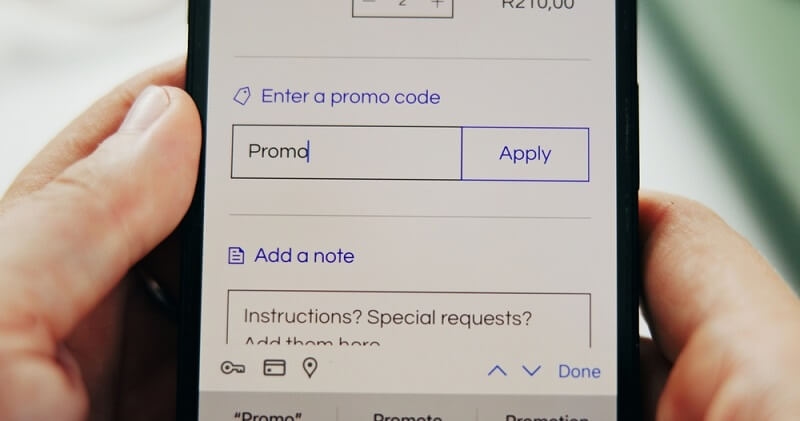
For anyone who shops online regularly, there’s nothing quite like the little thrill of typing in a promo code and watching the total drop. It’s that tiny moment where you feel like you’ve outsmarted the system. But here’s the thing—most people don’t actually use promo codes to their full advantage. Either they forget to apply them, grab expired ones, or miss the ones that would save them the most. If you’re going to shop online, you might as well do it right.
This isn’t about becoming a full-time bargain hunter. It’s about knowing the insider tricks that make a real difference. The aim? More savings without spending hours trawling through dodgy websites or ending up with codes that do nothing.
Before getting into the clever stuff, let’s talk basics. How to use promo codes sounds simple—you find a code, you type it in at checkout, you save money. But the reality is that every store has its own rules. Some codes are percentage-based, others give fixed discounts. Certain ones apply only to specific items or categories, while others require you to hit a minimum spend. Knowing which type you’re dealing with will help you avoid disappointment at the last step.
Also, promo codes don’t always stack together. Some retailers only allow one per order. Others, however, let you pile them on top of each other for extra savings. Which leads us to the fun part.

This is where seasoned shoppers really shine. Stacking is when you combine multiple codes, discounts, or deals to bring the price down as much as possible. For example, you might use a free shipping code, a 15% off promo, and a gift-with-purchase offer all on the same order. Not every store allows it, but when they do, it’s gold.
A smart way to find out? Test it. Add your items to the cart, enter one code, and see if the promo code box is still active. If it is, try adding another. Some brands don’t openly advertise that stacking is allowed, so experimenting pays off—literally.
The best codes are often the ones you don’t see on flashy banners. These are tucked away in email newsletters, loyalty programs, or exclusive offers sent to certain customers. Sometimes, they’re quietly sitting on social media pages or buried at the bottom of a brand’s website.
If you’re patient, sign up for a retailer’s mailing list and wait. Many will send you a welcome discount just for subscribing. Others might send special seasonal or birthday offers. It’s not unusual to get 20% off or free shipping simply because you joined their email club.
If you’re not in the mood to dig, rely on trustworthy code-collecting sites. Not all promo code websites are worth your time—some are full of outdated, non-working links. Stick to ones that have recent updates, user ratings, and verified tags. It’s worth spending a couple of minutes checking more than one site before you buy. That way, you’re not missing a code someone else found yesterday.
You might think promo codes are always available, but many brands release their best ones during certain periods—holiday sales, new product launches, or end-of-season clearance events. If you can hold off buying until these times, you’ll often get better deals. Combine that with a well-timed promo code, and you’re doubling your savings.
It’s one of the most frustrating moments in online shopping—you finally find the perfect discount code, and then… “This code has expired.” The key to avoiding this is to check the expiration date before you even try it. Some websites update in real time and will tell you if a code’s still active, while others rely on users to report expired ones.
Another tip? If you find a code that’s expired by just a day or two, it’s sometimes worth contacting customer service. They may still honor it as a goodwill gesture.
Cashback isn’t a promo code, but it’s one of the best ways to supercharge your savings. The idea is simple—you shop through a cashback site, and they give you a percentage of your purchase back. Now, here’s the trick: many stores still let you use promo codes while getting cashback. It’s like stacking, but with an extra bonus you get later.
Some apps and browser extensions send real-time coupon alerts the moment a new code drops for a store you follow. This means you’re not relying on luck or happening to check at the right time. Instead, you get in early, before the code gets overused or the offer runs out.
Free shipping codes might not sound as exciting as 30% off, but they add up—especially for heavy or bulky items. Many stores have a threshold where shipping becomes free, so pairing a discount code with a free shipping offer can make a big difference in the total cost.
Before you hit “apply,” read the terms. Some codes exclude certain products (like sale items or electronics), and others only work for specific regions. There’s nothing worse than loading your cart only to realize the code doesn’t apply. Spending an extra minute checking the rules can save you a lot of frustration.
Let’s say you’re buying a $120 pair of sneakers. You find a 20% off code (that’s $24 saved), then use a free shipping code worth $8. Add in 5% cashback through a shopping portal, and you’re getting another $4 back later. That’s a total of $36 saved—without hunting for hours or signing up for anything spammy.
If you shop online often, keeping a simple document or note on your phone with working codes for your favorite stores is a game changer. This way, you’re not scrambling to remember that great code you saw last week. Update it regularly, and delete the ones that no longer work.
Learning how to use promo codes well isn’t about being glued to your screen all day—it’s about knowing the right tricks and habits. From stacking coupons for extra savings to finding hidden promo codes, the goal is to make every purchase work harder for you. Bookmarking the best promo code websites helps keep things quick, and steering clear of expired ones saves you the headache of disappointment.
If you shop online often, even small discounts add up fast over time. The little effort you put in now could mean hundreds of dollars back in your pocket every year. Smart shoppers don’t just settle for whatever price is on the screen—they make the most of every deal available.
This content was created by AI